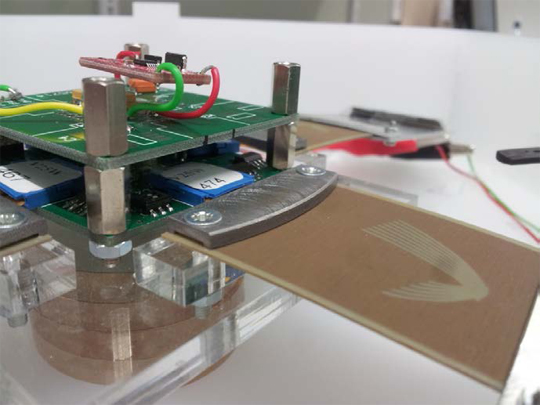Student's invention harvests energy from earthquakes
A wireless vibration sensor being developed by a Victoria University student could provide a low-cost solution for engineers to monitor the damage of buildings affected by earthquakes.
Daniel Tomicek, a fourth year Electronic and Computer Systems Engineering student, has been working on the innovative device, which harnesses the kinetic energy generated by earthquakes, as part of his final year research project.

The wireless sensor Daniel has developed is designed to be placed in several locations of a building to monitor the stress sustained by different areas during an earthquake.
The sensor harnesses the energy of the building’s movement during an earthquake to power itself, measuring the acceleration of the movement, and transmitting information in the form of data packets, to an off-site computer. The data can then be used by engineers to help assess the extent of damage to the building.
When earthquakes occur, the energy harvested from the vibrations activates the wireless transceiver to transmit the data packets which contain the sensor’s identifier. The greater the vibrations, the greater the energy harvested and the more packets that are sent. The device also uses minimal energy—so when there is no movement, the sensor simply does not operate.
Daniel has been working with Professor Winston Seah and Dr Ramesh Rayudu from Victoria’s Faculty of Engineering to develop a prototype which is affordable, and can be easily fixed to different parts of a building.
Currently, no sensor exists in the marketplace that doesn’t rely on batteries or electricity supply to run—meaning Daniel’s sensor is a major step forward.
"The biggest challenge has been figuring out how to make the sensor work from a cold start—how to ensure the initial packet of information was sent, given that earthquake movements begin so suddenly," says Daniel.
He has been testing the sensor’s capabilities recently at Te Papa’s Earthquake House in its Awesome Forces exhibit, where the device monitored ‘earthquakes’ at the house over the course of a week.
"Testing at the Earthquake House was a real success. The device managed to sense each earthquake and send packets of information for each one."
"Being able to use the exhibit was a very handy way of testing the device, and the staff members at Te Papa were really supportive."
Daniel says he was inspired to create a kinetic sensor after a friend worked on a similar project during a summer research scholarship at Victoria University. He had also heard about applications being developed in Europe, where special springs added to dance floors in nightclubs can harness an electrical current generated by the movement of dancers, which is then stored in batteries and used to run devices.
Daniel is looking forward to graduating next year and doing some overseas travel, before applying the skills he has learnt at university in the workplace.
